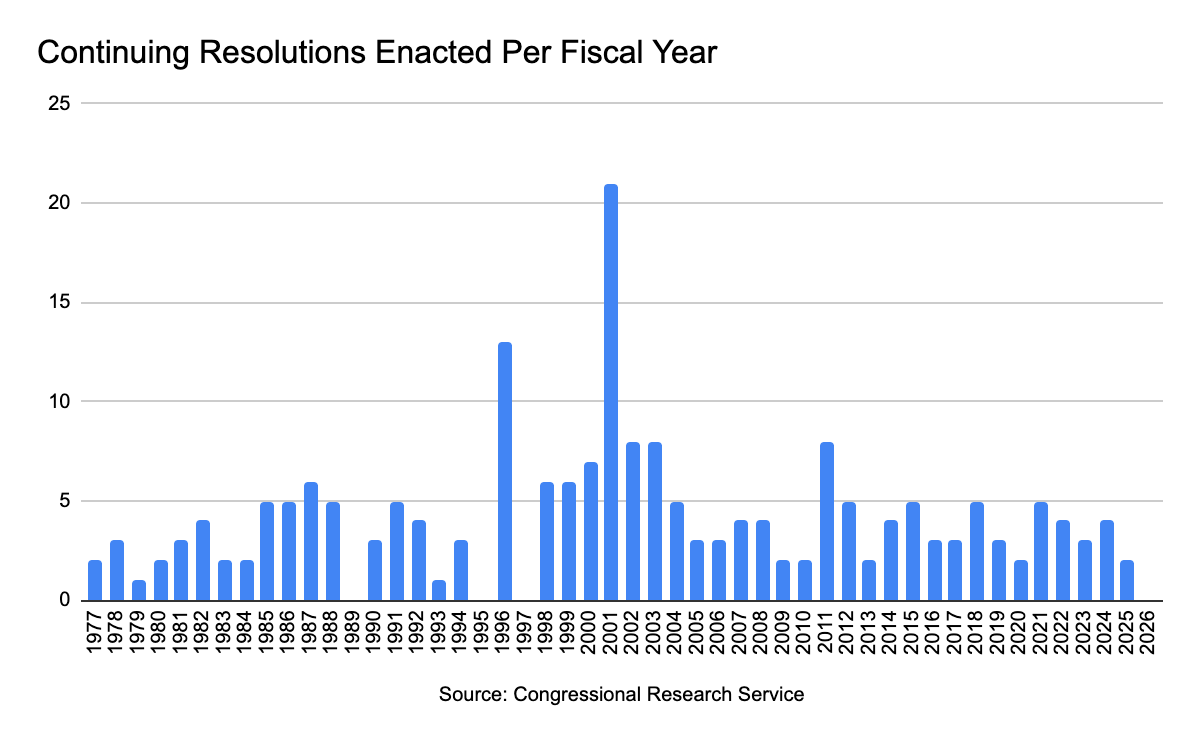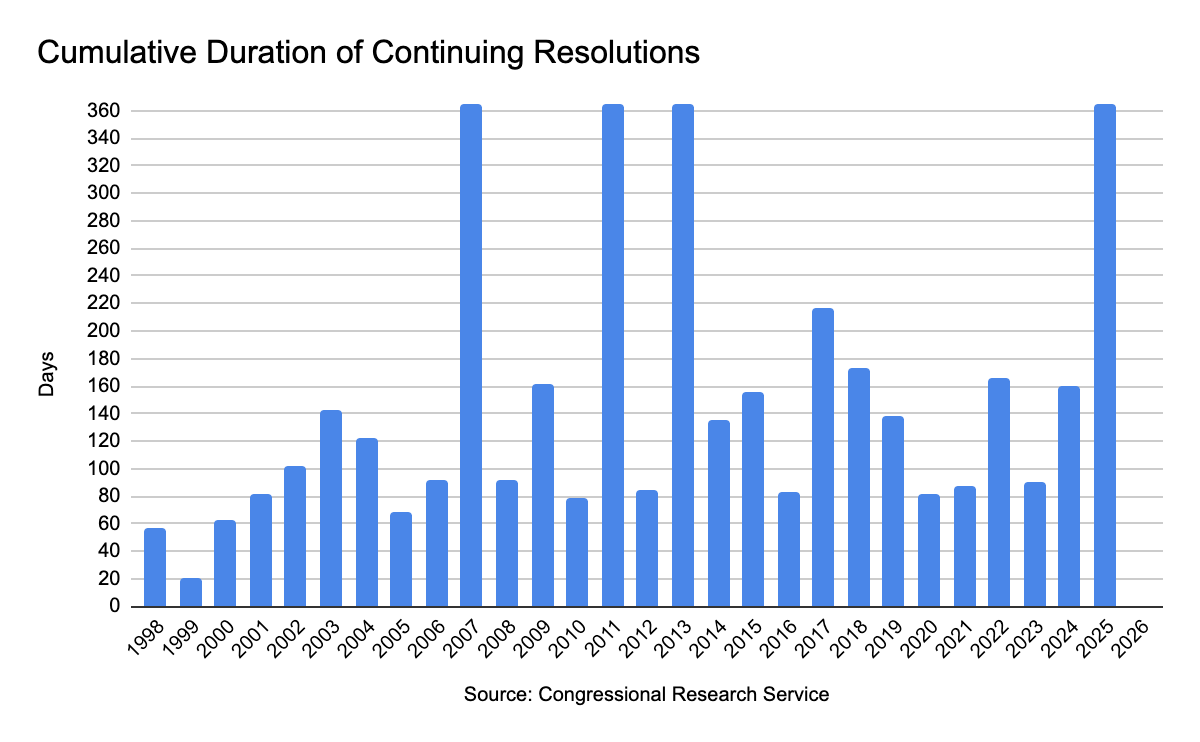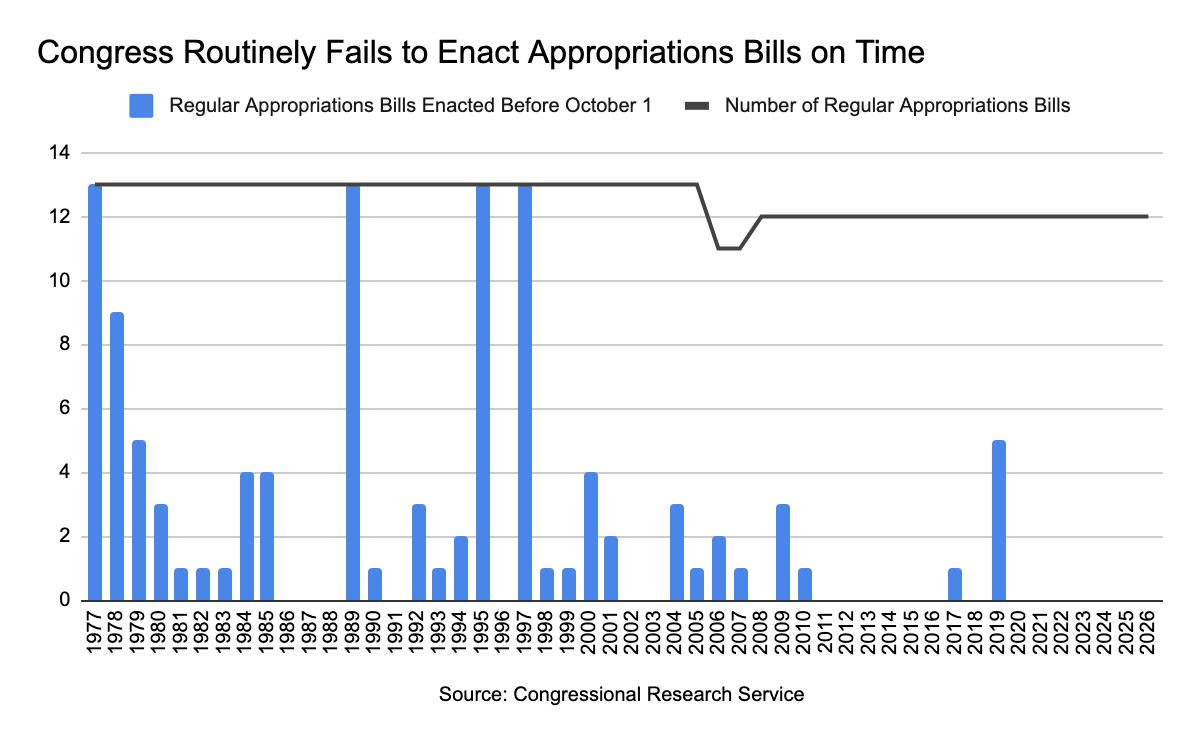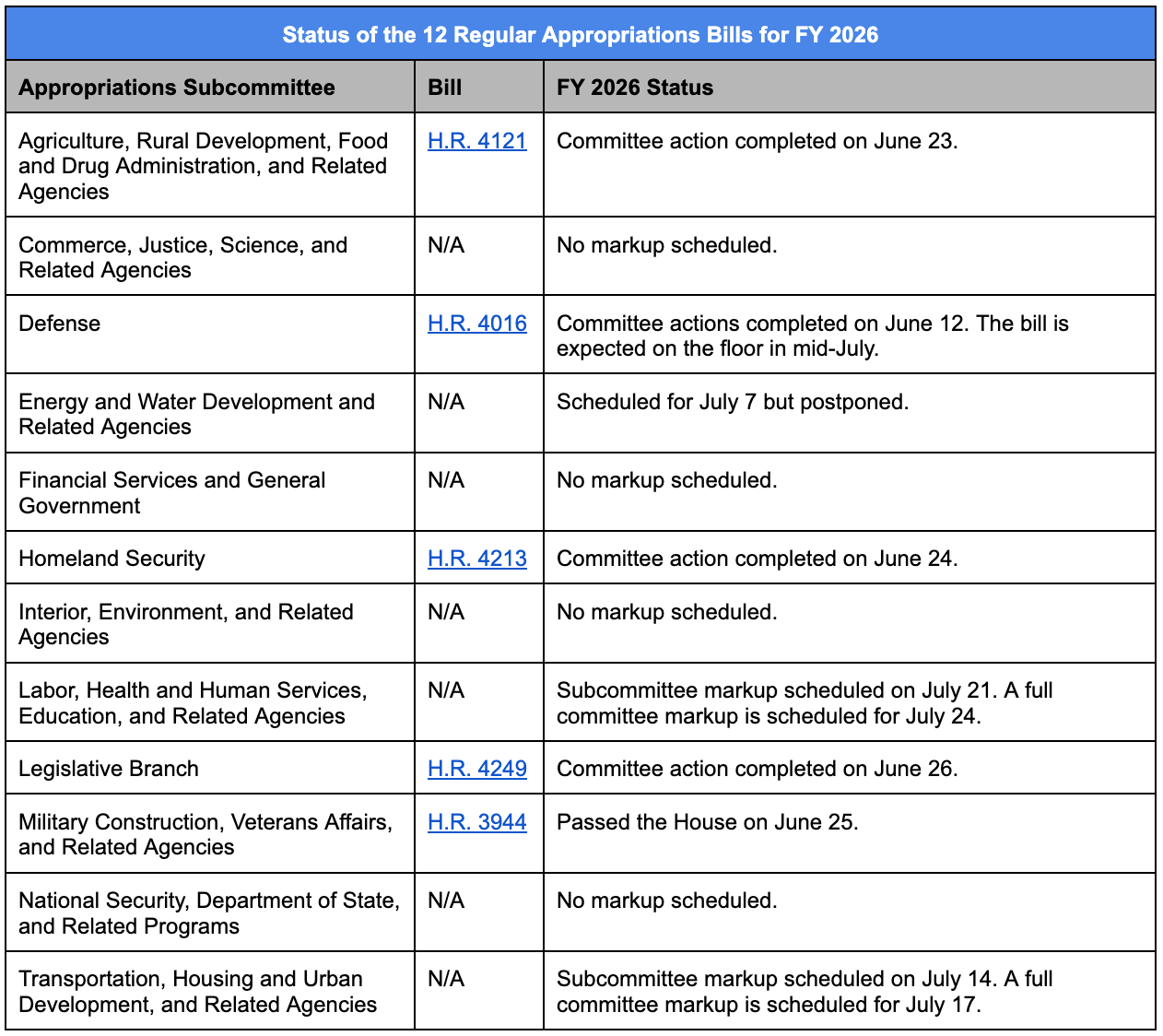The FY 2026 Appropriations Process Is Already a Trainwreck
Get ready for another continuing resolution
With the so-called “One Big Beautiful Bill Act” (OBBBA) done and signed into law,1 the House is finally turning its attention to the appropriations process for FY 2026. The process is more an exercise in futility than anything else. I’m not aware of anyone who works in or follows Congress for a living who expects Congress to complete the process on any of the 12 regular appropriations bills before the end of the fiscal year on September 30.
Due to its inability to complete any of the FY 2025 appropriations bills, Congress passed a full-year continuing resolution (CR) through September 30.2 This means that funding for FY 2024 was carried over from year to year, absent any changes to the funding levels specified in the legislation.
In some respects, this has become a routine occurrence. CRs are the norm. Since FY 2007, though, CRs have been used more frequently to fund the federal government for a full fiscal year. In 2007, Congress passed two of the regular appropriations bills–Defense and Homeland Security–but passed a CR to fund everything else. Congress passed a “CROmnibus” for FY 2011 that contained a full-year appropriations bill for Defense while the remaining appropriations were done through a CR. FY 2013 saw another CROmnibus–five appropriations bills were passed, and the remaining seven were taken care of via a CR.
The fact is that Congress’s inability to perform its most basic function means the federal government is operating based on outdated needs and assumptions. It’s poor fiscal planning, often stemming from ideological issues.
We often hear about “regular order,” a phrase that can have multiple meanings. In the context of appropriations, it means following the Budget Act. Section 300 of the Budget Act stipulates that the House Appropriations Committee is to report the last of the regular appropriations bills by June 10 and that the House is to complete action on the regular appropriations bills by June 30.3 The goal of the process is to complete all regular appropriations bills by October 1, the start of the new fiscal year. That has happened only four times since the Budget Act took effect in 1977, most recently for FY 1997.
Where Is Congress in the FY 2026 Appropriations Cycle?
The current regime of 12 regular appropriations bills has been around since FY 2008. Since the FY 2008 appropriations cycle, Congress has passed only ten appropriations bills on time. That’s ten out of 228 opportunities. Congress has passed a total of zero–-yes, zero–from the FY 2020 appropriations cycle through FY 2025. This is a fundamental failure of congressional leadership on both sides of the aisle.
Not a single one of the regular appropriations bills was reported out of the House Appropriations Committee by June 10. Only one–Military Construction, Veterans Affairs, and Related Agencies Appropriations Act for FY 2026, H.R. 3944–passed the House before June 30. To date, the Committee has approved the 302(b) allocations for four of the appropriations bills.4
Although the House was supposed to be in session this week, an impromptu district work period was announced. The House currently has only two scheduled session weeks left before the August recess.5 When the House returns on September 2, members will have 14 legislative days to negotiate a government funding agreement, most likely another continuing resolution (CR).
Even if, by some miracle, the House manages to pass all 12 regular appropriations bills, it won’t mean much. The point of getting these bills done by June 30 is to give the Senate time to work through them with their own versions of the bills and to enter into conference, if necessary. That’s difficult in a good year. Making it harder is the House Appropriations Committee’s plan to reduce discretionary outlays. Although the Committee isn’t mirroring the White House’s so-called “skinny budget,” the significant spending cuts that are likely to come from the House aren’t going to pass in the Senate, where 60 votes are required to move forward on most legislation, including appropriations bills.
Considering that congressional Democrats are furious with the Trump administration’s brazen use of impoundment to avoid spending obligated funds, it’s hard to see any deal on any appropriations bills that doesn’t include accountability if the administration continues to ignore Congress. That’ll be the cost of avoiding a CR, but it’s a cost that’s likely too high for Republicans.
I’m anxiously awaiting a detailed cost estimate from the Congressional Budget Office on OBBBA. If and when that comes, I’ll knock out a write-up on it.
I’m not aware of the Committee approving any additional 302(b) allocations. These allocations, named after Sec. 302(b) of the Budget Act–found in statute at 2 U.S.C. §633(b)–are the are the allocations given to each subcommittee. Essentially, the Committee takes the topline discretionary budget authority for the fiscal year and subdivides that figure.
Currently, the August recess begins Friday, July 25. It’s possible that House Republican leadership will schedule votes during the week of July 28. See the 2025 House Calendar from the Majority Leader’s office.






